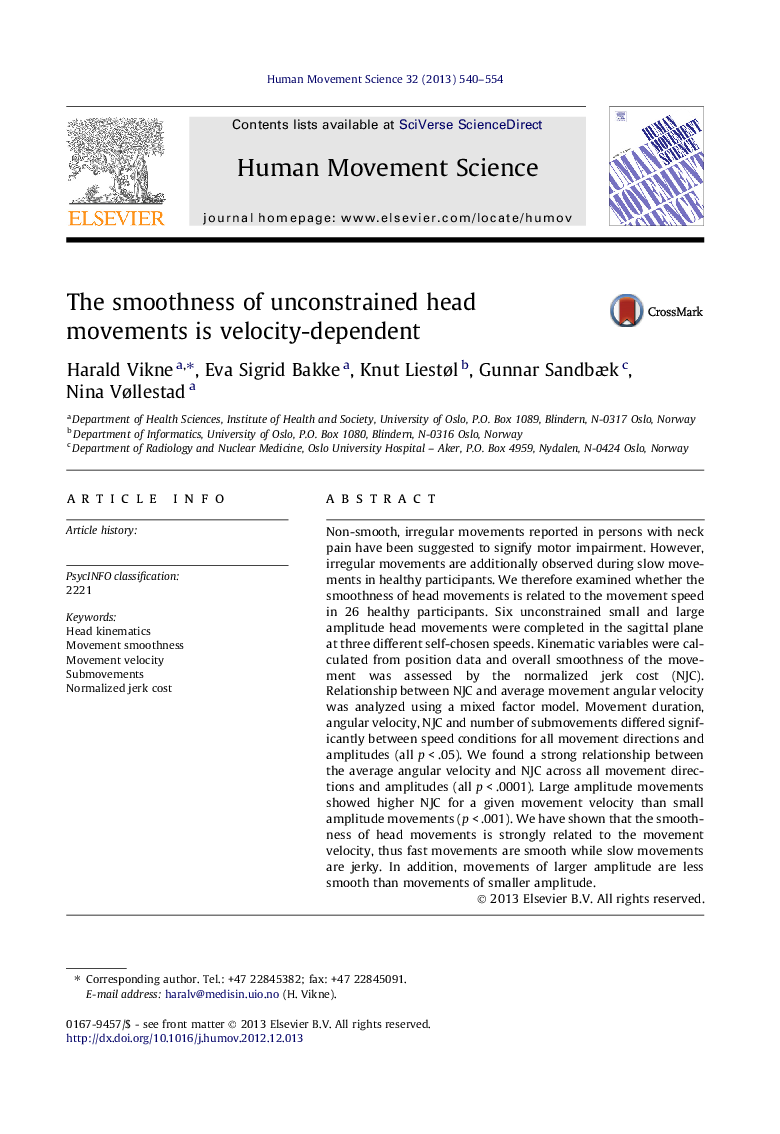| Article ID | Journal | Published Year | Pages | File Type |
|---|---|---|---|---|
| 10459186 | Human Movement Science | 2013 | 15 Pages |
Abstract
Non-smooth, irregular movements reported in persons with neck pain have been suggested to signify motor impairment. However, irregular movements are additionally observed during slow movements in healthy participants. We therefore examined whether the smoothness of head movements is related to the movement speed in 26 healthy participants. Six unconstrained small and large amplitude head movements were completed in the sagittal plane at three different self-chosen speeds. Kinematic variables were calculated from position data and overall smoothness of the movement was assessed by the normalized jerk cost (NJC). Relationship between NJC and average movement angular velocity was analyzed using a mixed factor model. Movement duration, angular velocity, NJC and number of submovements differed significantly between speed conditions for all movement directions and amplitudes (all p < .05). We found a strong relationship between the average angular velocity and NJC across all movement directions and amplitudes (all p < .0001). Large amplitude movements showed higher NJC for a given movement velocity than small amplitude movements (p < .001). We have shown that the smoothness of head movements is strongly related to the movement velocity, thus fast movements are smooth while slow movements are jerky. In addition, movements of larger amplitude are less smooth than movements of smaller amplitude.
Related Topics
Life Sciences
Neuroscience
Cognitive Neuroscience
Authors
Harald Vikne, Eva Sigrid Bakke, Knut Liestøl, Gunnar Sandbæk, Nina Vøllestad,
